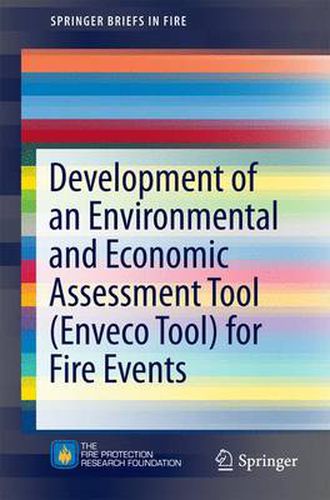Readings Newsletter
Become a Readings Member to make your shopping experience even easier.
Sign in or sign up for free!
You’re not far away from qualifying for FREE standard shipping within Australia
You’ve qualified for FREE standard shipping within Australia
The cart is loading…






This title is printed to order. This book may have been self-published. If so, we cannot guarantee the quality of the content. In the main most books will have gone through the editing process however some may not. We therefore suggest that you be aware of this before ordering this book. If in doubt check either the author or publisher’s details as we are unable to accept any returns unless they are faulty. Please contact us if you have any questions.
This book investigates the feasibility of developing a tool that enables fire departments to estimate the value of their services to a community in terms of environmental and financial impact. This book provides a summary of this effort, which resulted in development of a prototype tool for fire department use. The impact of fire on a community is usually measured in terms of the number of fires, human casualties, and property damage. There are, however, more subtle impacts of fire that are not so easily estimated but contribute to the measure of overall performance of the fire service in protecting a community. While environmental and economic impact assessment methodologies exist as separate systems, they generally require a high level of knowledge that is outside the scope of most fire departments. A relatively simple methodology for estimating the environmental and economic impact of fires helps communities understand the degree to which fire department activities can benefit a community’s environmental and economic well-being. The scope and approach for this prototype tool is explained, including risk assessment, cost benefit analysis, life cycle assessment, integration and implementation, and sensitivity and uncertainty analysis. It includes multiple case studies and offers statistical support for future expansion of the tool. Fire service professionals will find this a useful new approach to presenting value in a community, as well as a method for examining their own financial and environmental plans.
$9.00 standard shipping within Australia
FREE standard shipping within Australia for orders over $100.00
Express & International shipping calculated at checkout
This title is printed to order. This book may have been self-published. If so, we cannot guarantee the quality of the content. In the main most books will have gone through the editing process however some may not. We therefore suggest that you be aware of this before ordering this book. If in doubt check either the author or publisher’s details as we are unable to accept any returns unless they are faulty. Please contact us if you have any questions.
This book investigates the feasibility of developing a tool that enables fire departments to estimate the value of their services to a community in terms of environmental and financial impact. This book provides a summary of this effort, which resulted in development of a prototype tool for fire department use. The impact of fire on a community is usually measured in terms of the number of fires, human casualties, and property damage. There are, however, more subtle impacts of fire that are not so easily estimated but contribute to the measure of overall performance of the fire service in protecting a community. While environmental and economic impact assessment methodologies exist as separate systems, they generally require a high level of knowledge that is outside the scope of most fire departments. A relatively simple methodology for estimating the environmental and economic impact of fires helps communities understand the degree to which fire department activities can benefit a community’s environmental and economic well-being. The scope and approach for this prototype tool is explained, including risk assessment, cost benefit analysis, life cycle assessment, integration and implementation, and sensitivity and uncertainty analysis. It includes multiple case studies and offers statistical support for future expansion of the tool. Fire service professionals will find this a useful new approach to presenting value in a community, as well as a method for examining their own financial and environmental plans.